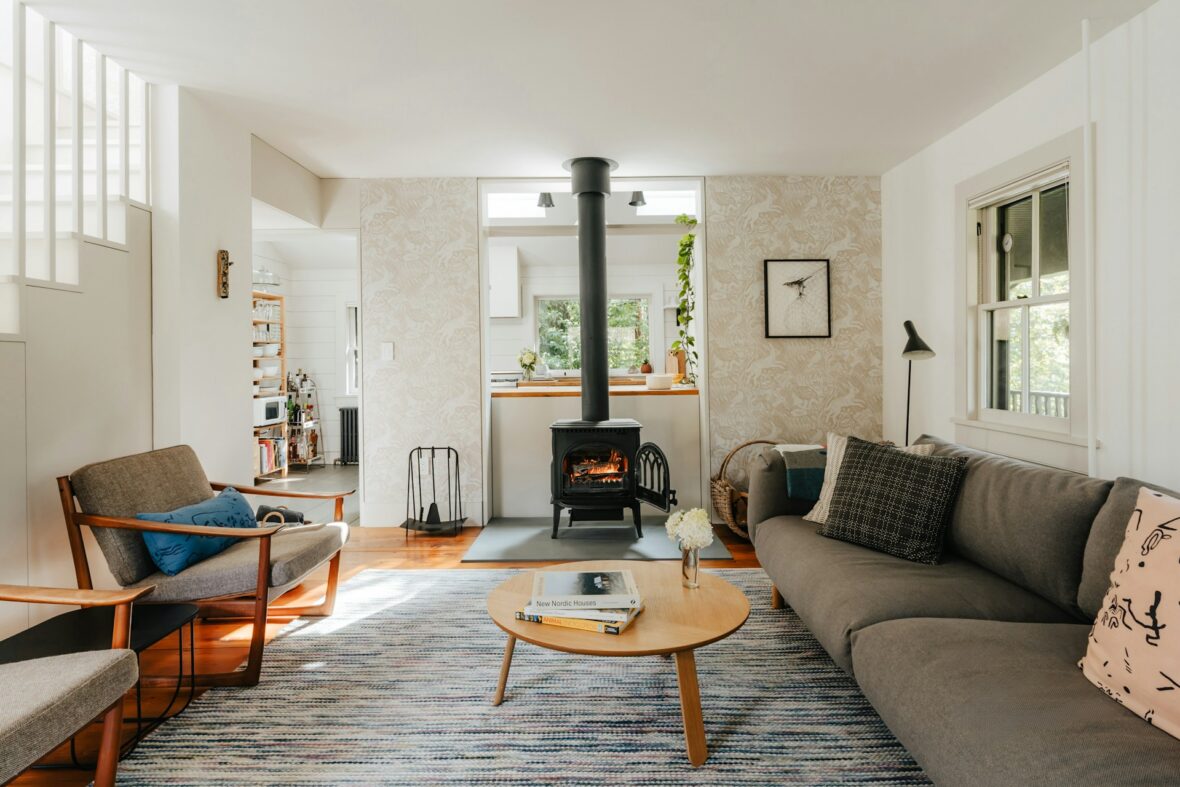Are you tired of staring at the same bland walls day after day? The power to completely change your home’s atmosphere lies in a simple paintbrush and the right creative vision. This comprehensive guide will explore innovative painting techniques and strategies that can breathe new life into any room, regardless of your budget or skill level.
Whether you’re a seasoned DIY enthusiast or someone who’s never picked up a paintbrush, these practical ideas will help you create a stunning visual impact throughout your home. From subtle, sophisticated touches to bold statement pieces, you’ll discover how strategic color choices and creative techniques can make your space feel entirely different.
Strategic Color Planning for Maximum Impact
Before diving into specific techniques, successful room makeovers begin with thoughtful color selection. Professional interior designers recommend starting with a cohesive color palette that flows throughout your home while allowing each room to maintain its unique personality.
Consider your room’s natural lighting when selecting colors. North-facing rooms benefit from warm tones like soft yellows and peachy hues, while south-facing spaces can handle cooler blues and greens. The size of your room also matters—lighter colors make small spaces feel larger, while darker shades can make oversized rooms feel more intimate and cozy.
Accent Walls: Your Gateway to Bold Design
Creating an accent wall represents one of the most effective ways to add visual interest without overwhelming your space. This technique involves painting one wall in a contrasting color or pattern while keeping the remaining walls neutral.
Choosing the Right Wall for Your Accent
The focal wall should naturally draw attention. In bedrooms, the wall behind the headboard works perfectly. Living rooms benefit from the wall behind the sofa or entertainment center. Dining rooms can highlight the wall where artwork or a mirror would typically hang.
Color Combinations That Work
Popular accent wall combinations include:
- Deep navy with crisp white trim
- Sage green paired with warm cream
- Charcoal gray against soft beige
- Rich burgundy with light gray
Decorative Painting Techniques for Every Skill Level
Geometric Patterns and Shapes
Geometric designs add modern sophistication to any room. Start with simple shapes like triangles, hexagons, or stripes before attempting complex patterns. Use painter’s tape to create clean lines and ensure professional-looking results.
Triangle Accent Design:
Create a mountain-inspired accent wall using overlapping triangles in varying shades of the same color family. This technique works particularly well in nurseries and home offices.
Hexagon Feature Wall:
Honeycomb patterns create visual texture while maintaining clean, modern aesthetics. Use three different shades of the same color for subtle depth.
Ombre and Gradient Effects
Ombre painting creates a smooth color transition from light to dark or between different hues. This technique works beautifully in bedrooms and bathrooms, creating a calming, spa-like atmosphere.
Start with your lightest color at the top, gradually blending darker shades as you move downward. Work in small sections while the paint remains wet to ensure smooth transitions.
Textured Wall Treatments
Add dimension to your walls using various textural techniques:
Sponge Painting:
Create organic, cloud-like textures using natural sea sponges. This technique works well in bathrooms and adds visual interest without overwhelming the space.
Rag Rolling:
Use cotton rags to create subtle texture and depth. This classic technique adds elegance to formal dining rooms and living spaces.
Stippling:
Apply paint with a stippling brush to create fine, consistent texture. This method works particularly well for hiding minor wall imperfections.
Room-Specific Painting Strategies
Living Room Innovations
Your living room serves as the heart of your home, making it the perfect space for creative expression. Consider these approaches:
Two-Tone Walls:
Paint the bottom half of your walls in a darker color and the top half in a lighter shade, separated by chair rail molding. This classic technique adds sophistication and can make ceilings appear higher.
Painted Ceiling Details:
Don’t overlook your fifth wall. Painting the ceiling in a soft color or adding decorative elements can dramatically change the room’s entire feel.
Bedroom Retreats
Bedrooms should promote relaxation while reflecting your style:
Headboard Alternatives:
Paint a headboard directly onto the wall using curved lines or geometric shapes. This approach saves money while creating a custom look.
Calming Color Schemes:
Soft blues, gentle greens, and warm neutrals promote better sleep quality. Avoid bright, stimulating colors in sleeping areas.
Kitchen and Dining Area Enhancements
Cabinet Color Coordination:
Coordinate your wall colors with existing cabinetry. If you have white cabinets, consider soft pastels or bold jewel tones for visual contrast.
Chalkboard Paint Applications:
Create functional art by painting a section of wall with chalkboard paint. This works particularly well in kitchens for grocery lists and meal planning.
Bathroom Transformations
Moisture-Resistant Techniques:
Use high-quality, moisture-resistant paints specifically designed for bathrooms. Semi-gloss or satin finishes work best in these humid environments.
Small Space Solutions:
Light colors make small bathrooms feel more spacious. Consider painting the ceiling the same color as the walls to create seamless flow.
Advanced Techniques for Experienced Painters
Mural Creation
Hand-painted murals create truly unique focal points. Start with simple designs like tree silhouettes or abstract shapes before attempting detailed scenes.
Metallic Accents
Incorporate metallic paints for glamorous touches. Gold, silver, and copper accents work particularly well in dining rooms and powder rooms.
Faux Finishing
Master techniques like faux marble, wood grain, or stone textures to add luxury without expensive materials.
Essential Tools and Materials
Basic Supplies:
- High-quality brushes and rollers
- Painter’s tape
- Drop cloths
- Primer
- Paint samples
- Level and measuring tools
Professional-Grade Options:
- Paint sprayers for large projects
- Specialty brushes for texture work
- Color-matching tools
- Professional-grade primers
Budget-Friendly Implementation Tips
Room transformation doesn’t require expensive materials or professional help. Focus on high-impact areas first, such as accent walls or focal points. Purchase paint during sales events, and consider mixing your custom colors to save money.
Sample different techniques on a poster board before committing to the walls. This approach allows you to perfect your technique while avoiding costly mistakes.
Maintenance and Longevity
Proper preparation ensures lasting results. Clean walls thoroughly, fill holes and cracks, and apply appropriate primer before painting. High-traffic areas benefit from more durable paint finishes like eggshell or satin.
Your Next Steps to Design Success
Ready to begin your painting journey? Start by selecting one room and choosing a technique that matches your skill level. Remember that even small changes can create dramatic results when executed thoughtfully.
Consider documenting your progress with before and after photos. This practice helps you refine your technique and inspires future projects.
If you’re feeling overwhelmed, begin with a simple accent wall or small decorative element. Success with smaller projects builds confidence for larger undertakings.
For additional inspiration and step-by-step tutorials, learn more about advanced decorative painting techniques through online resources and local workshops. Many home improvement stores offer free classes that can help you master new skills while connecting with other DIY enthusiasts.






